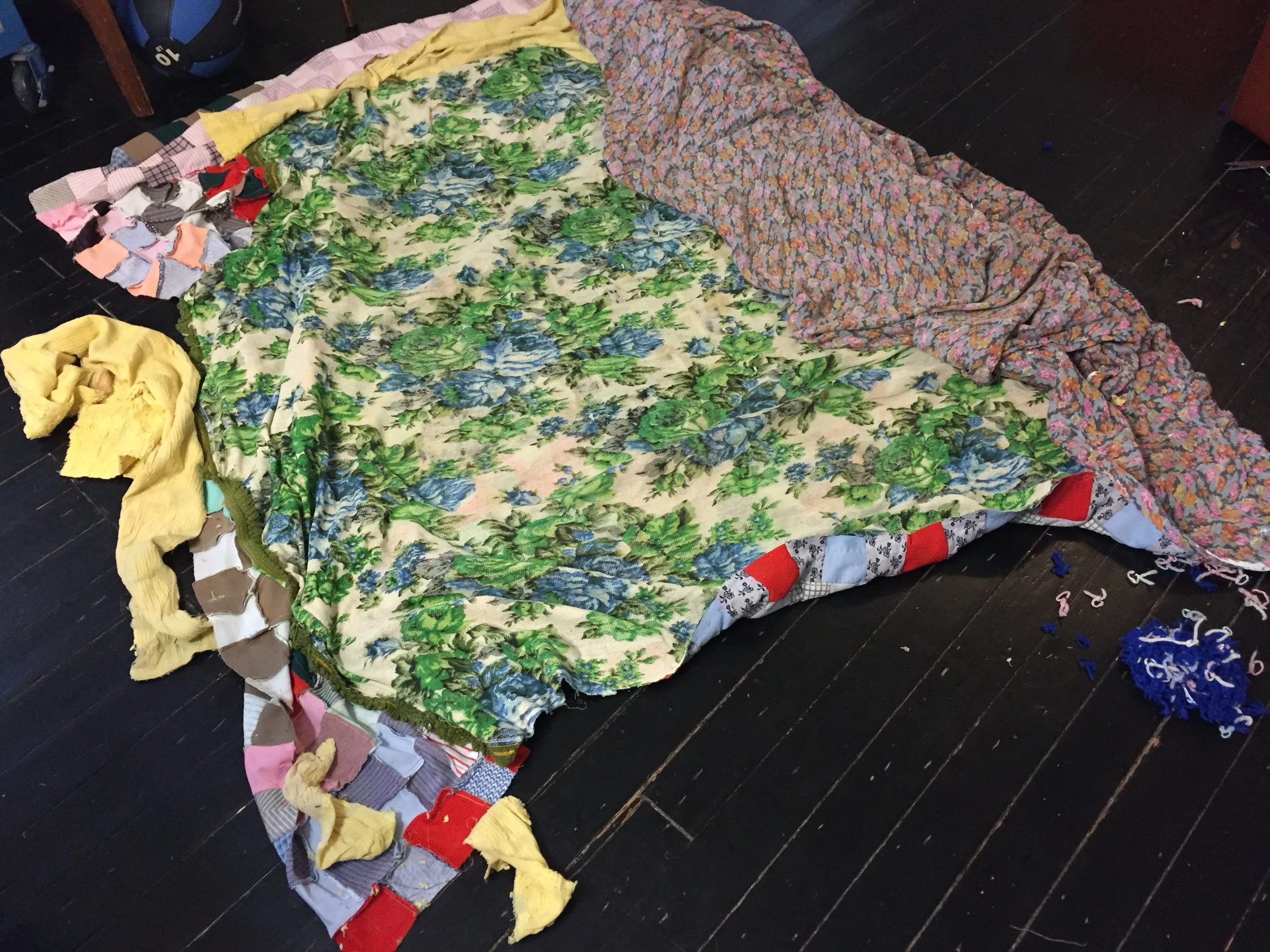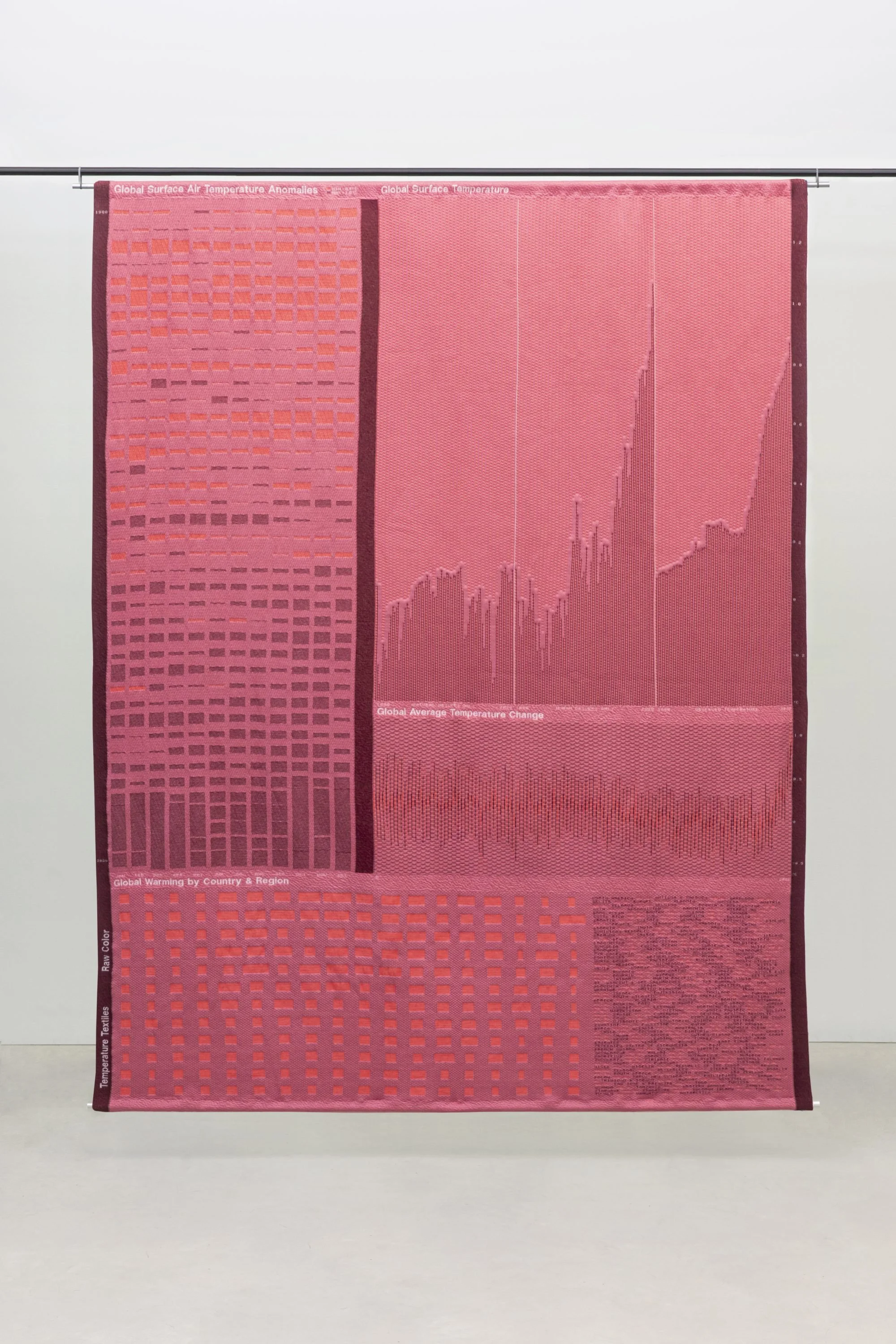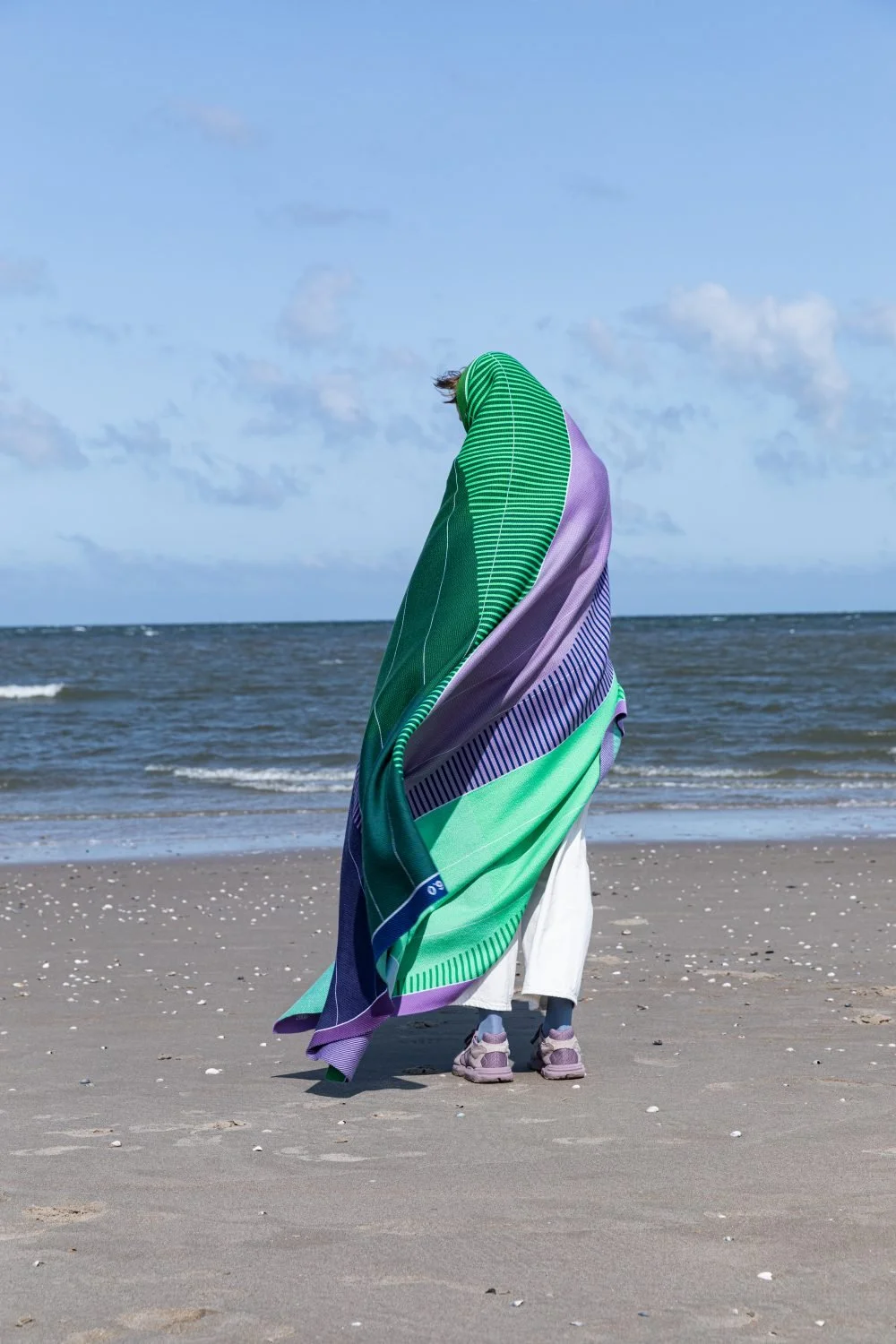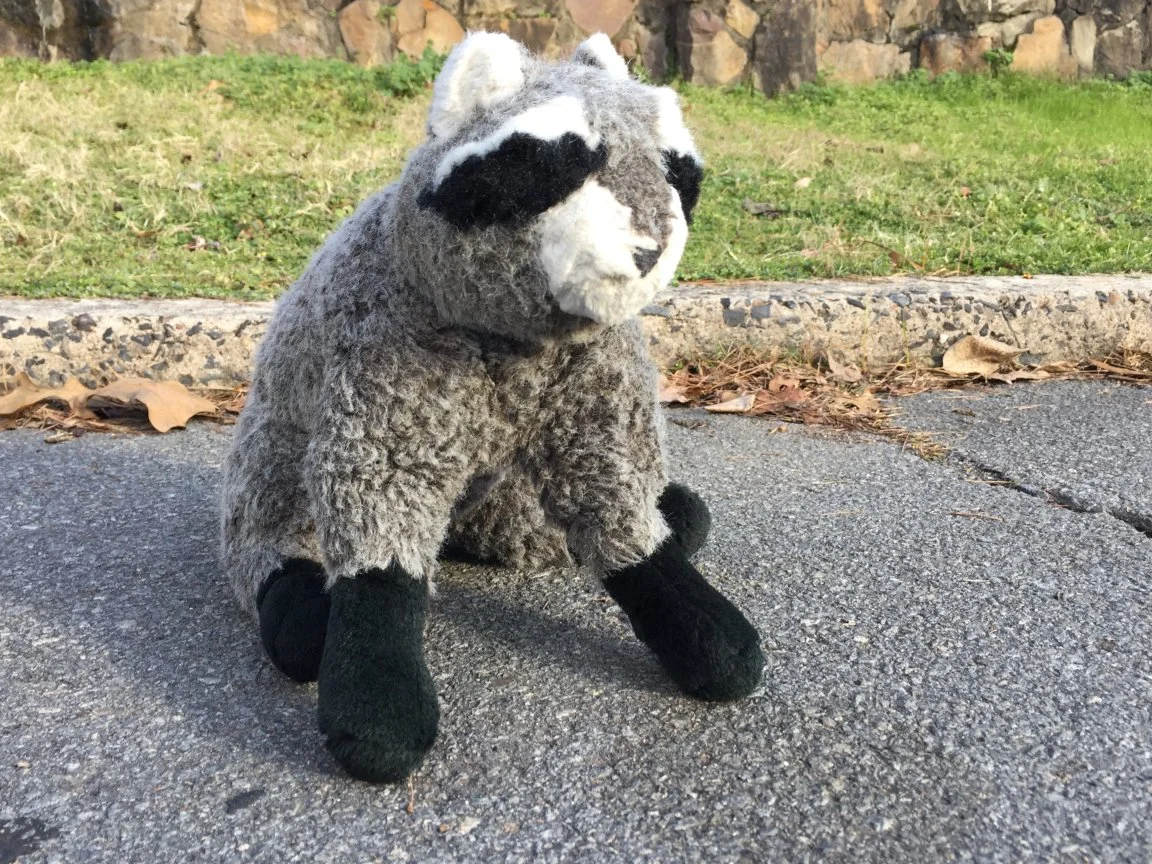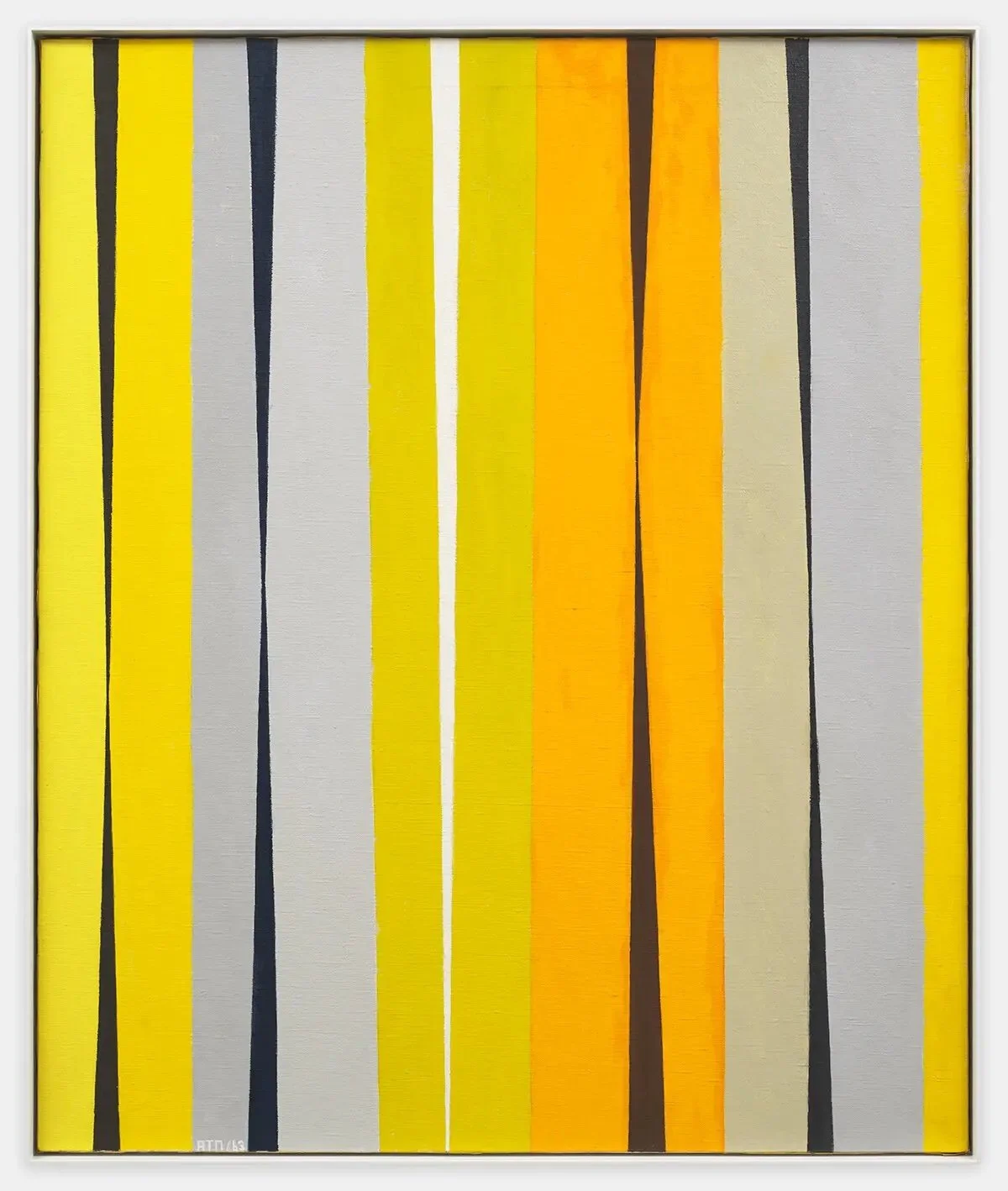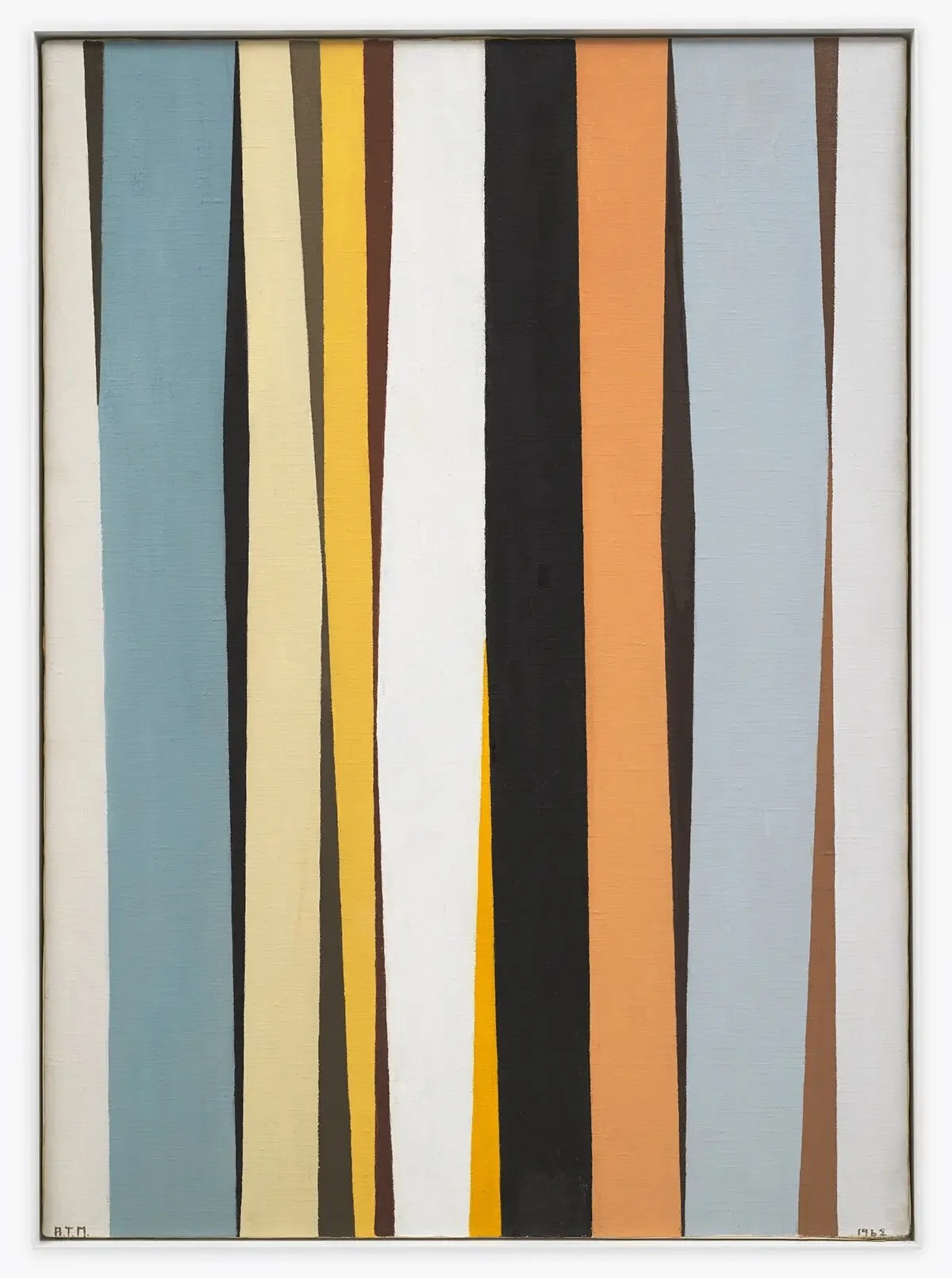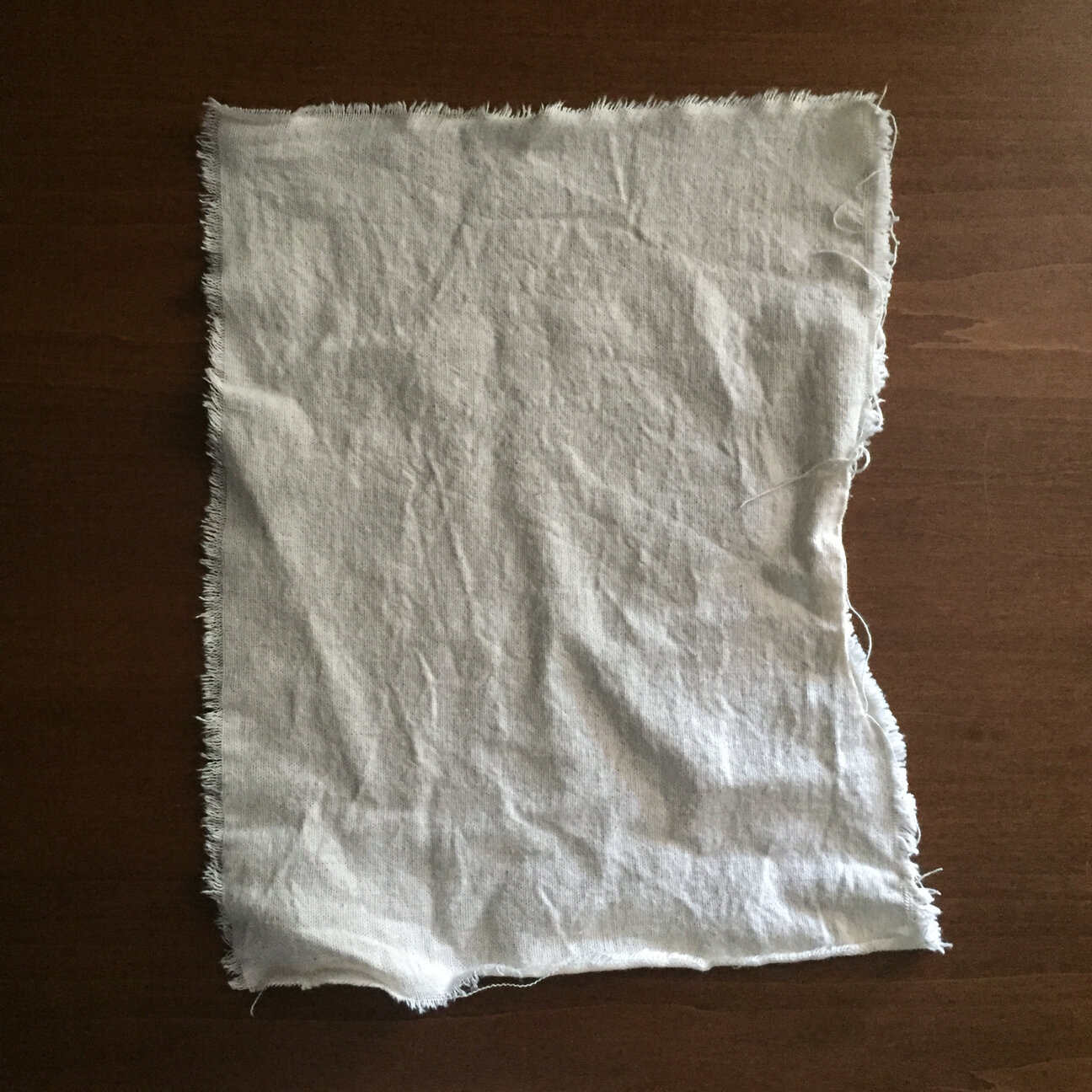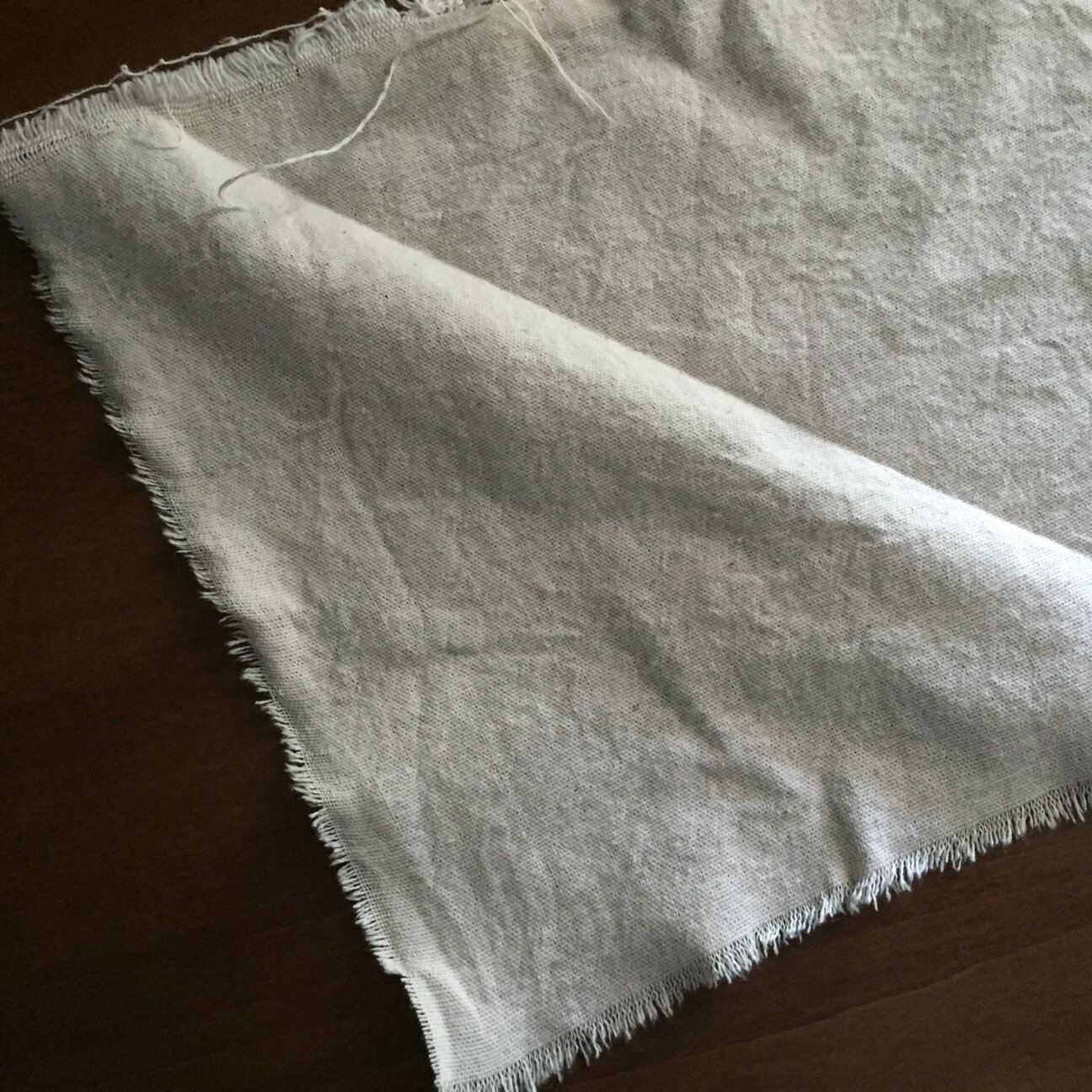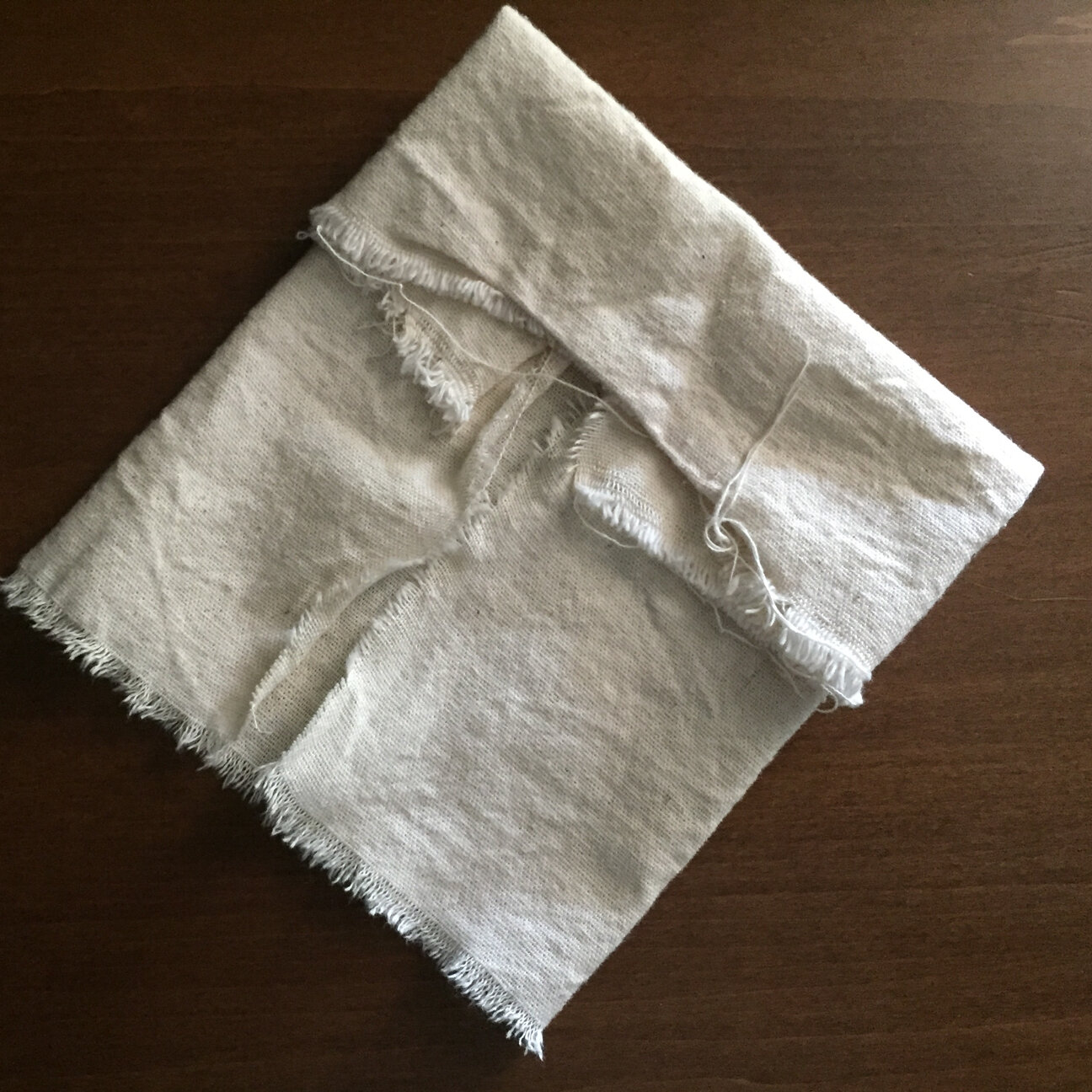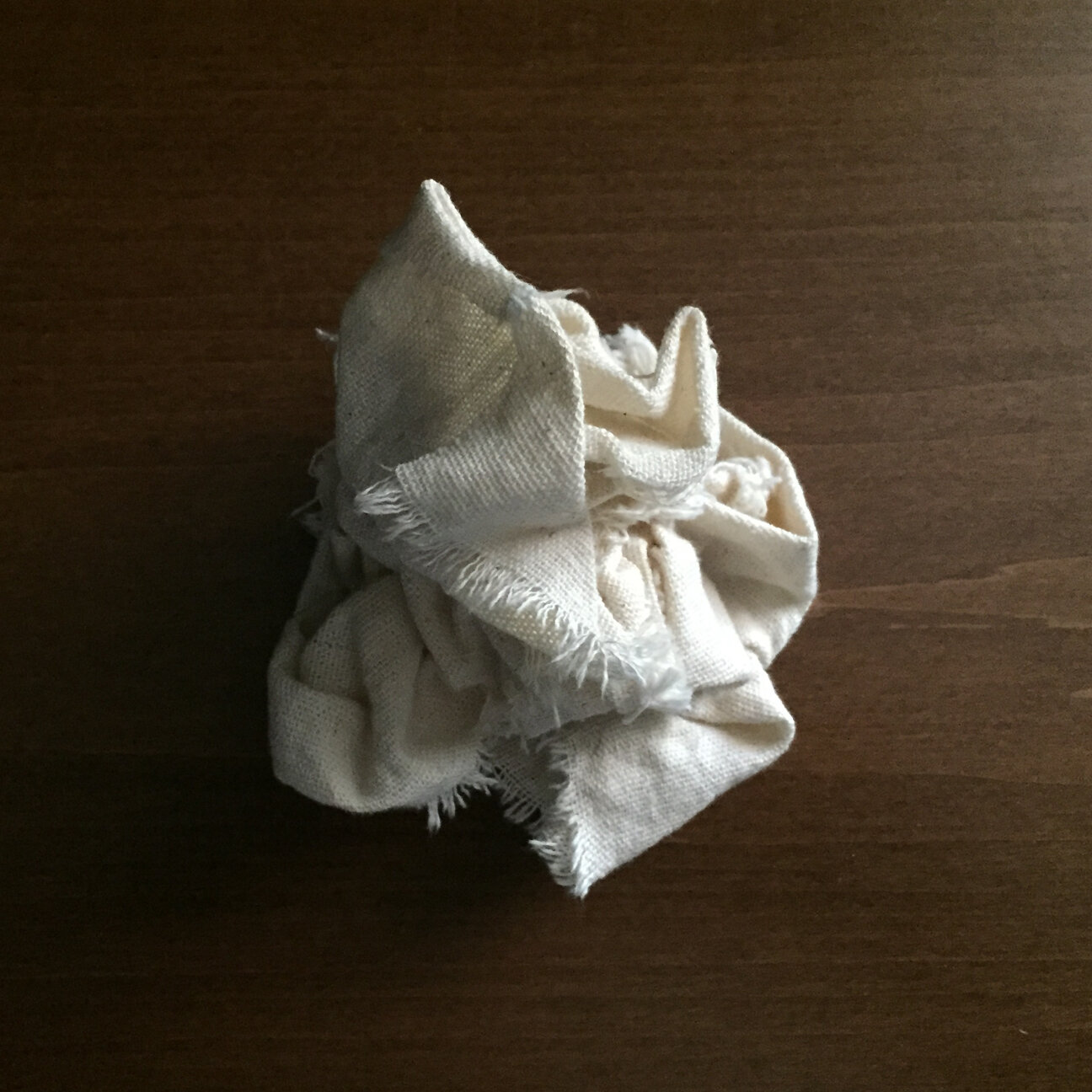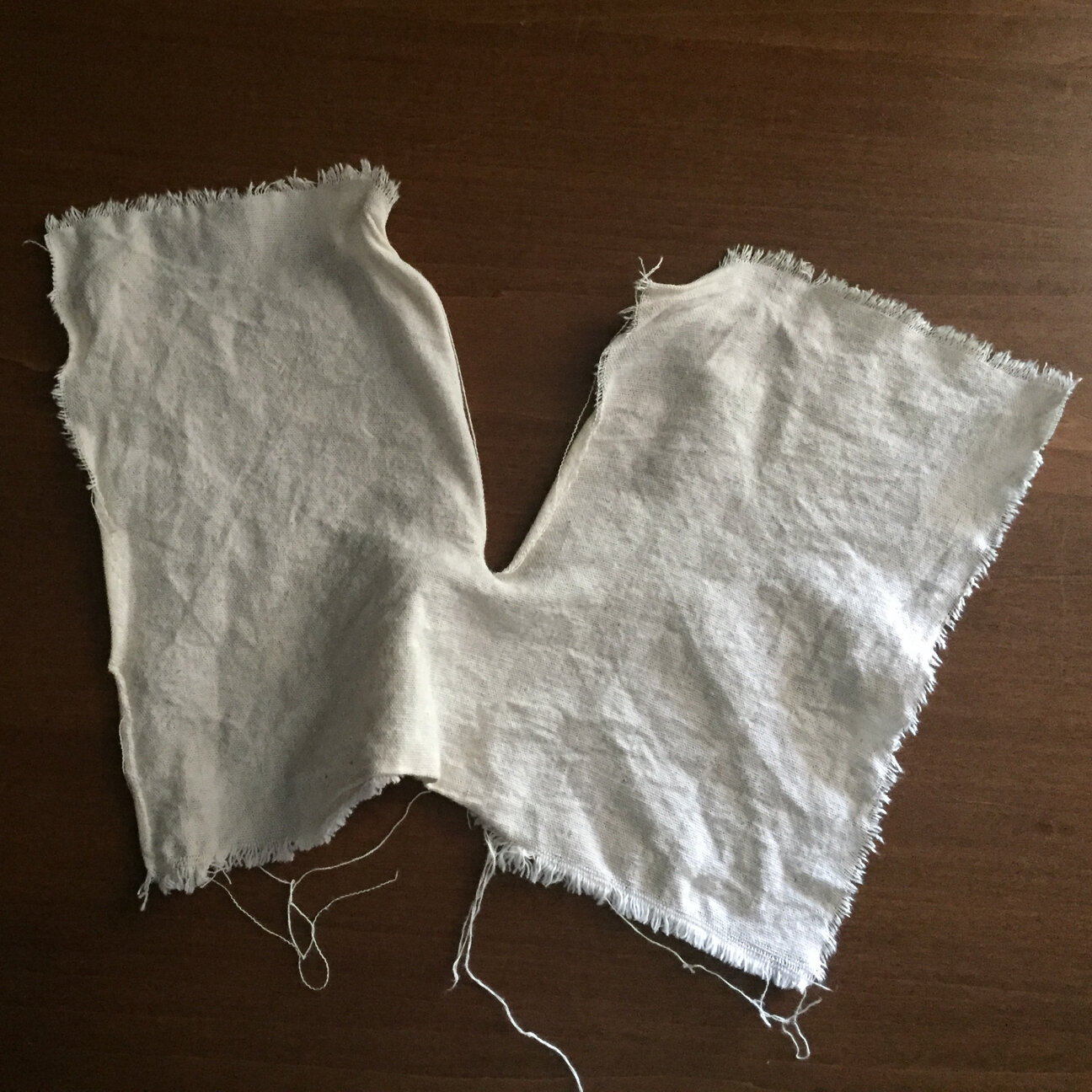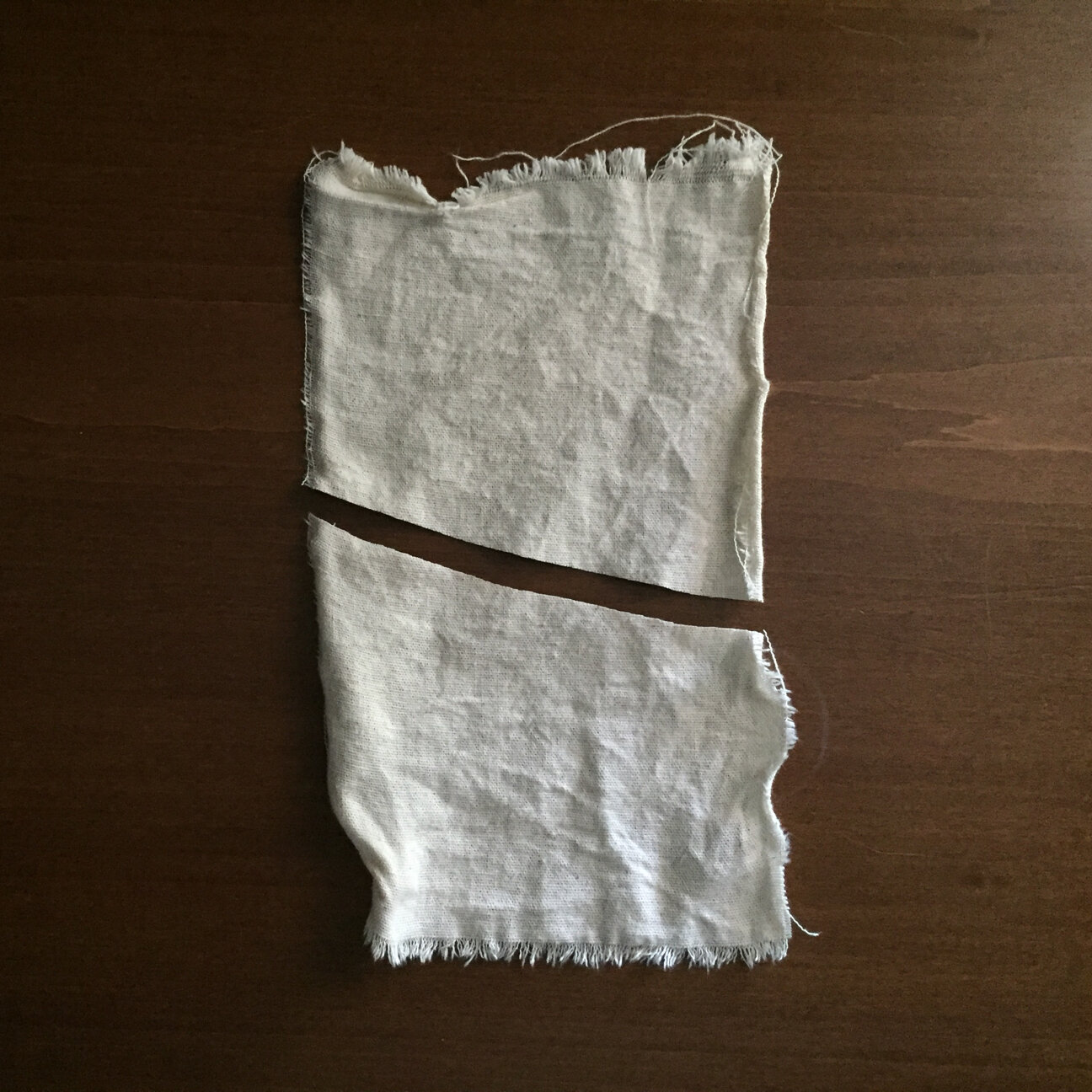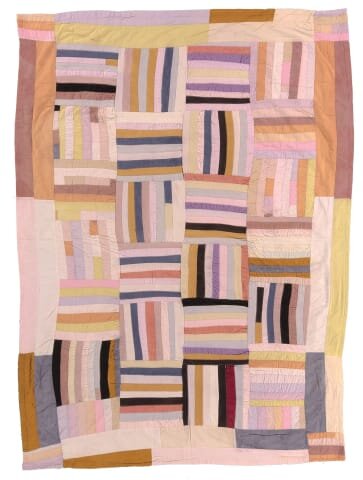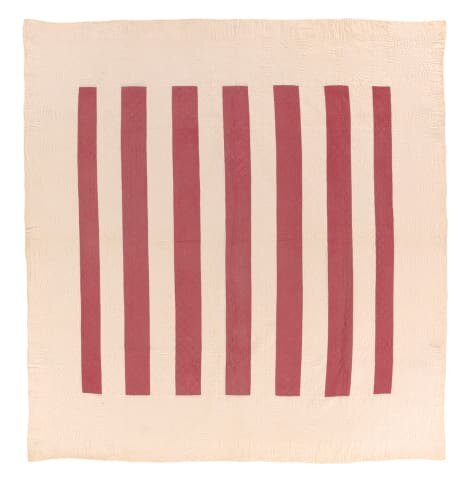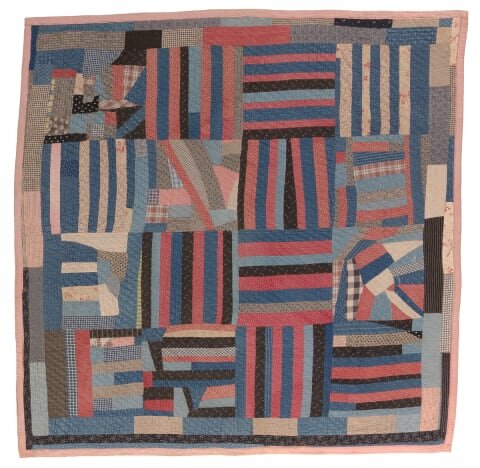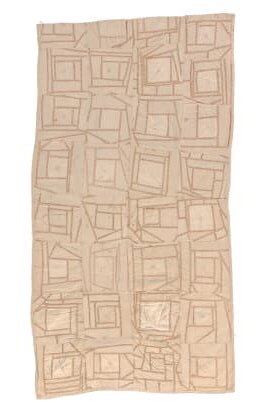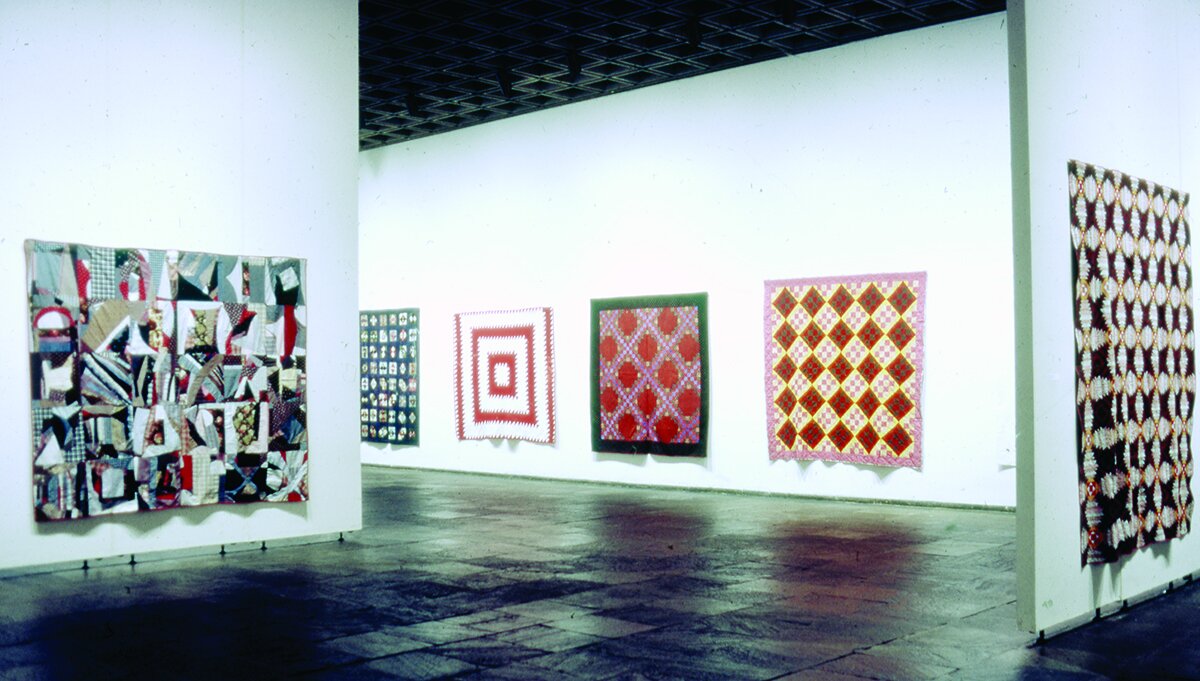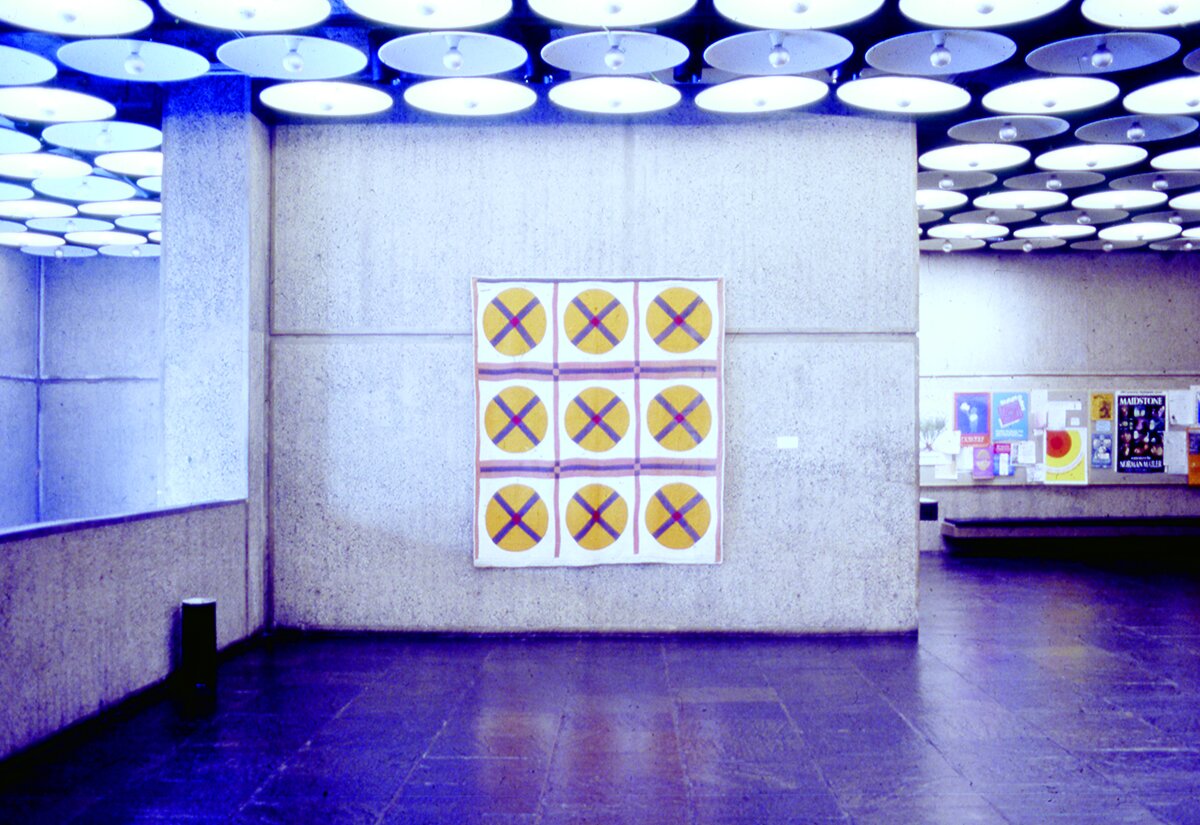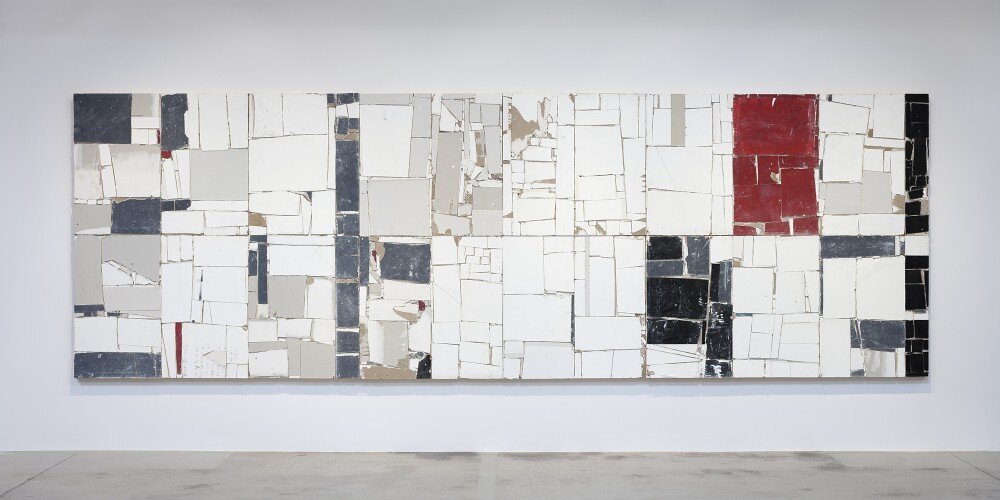When deconstructing an old quilt, you never know what you’ll find. Inside this found quilt, which had been used as a painter’s drop cloth, there was an old flowered drape with a fringe and several pieces of a yellow tablecloth or bedspread. The backing was also a thin, old, patterned drape or bed cover. I will use the top of this quilt in a new project, and try to find some use for the batting material as well.
All of the hand-stitching on this one was done in bright red thread, so I may do the same when it comes time to put the new one together.
